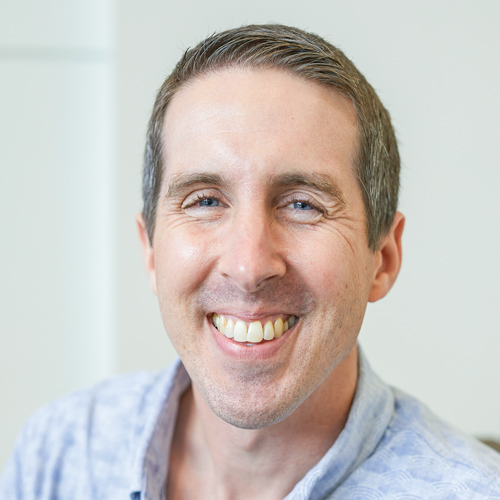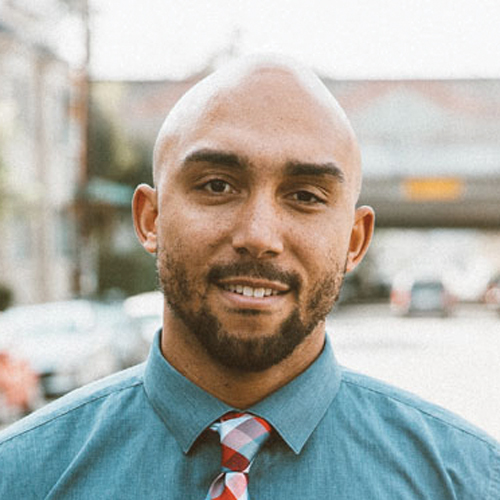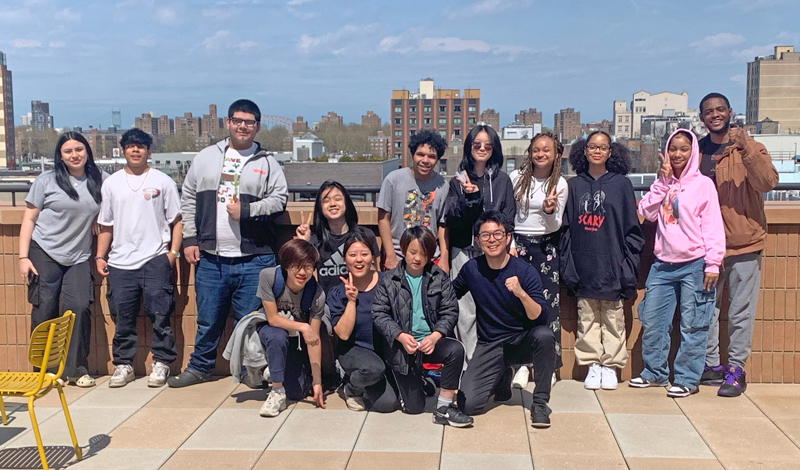Every June, the SGI-USA celebrates Future Division Month to reconfirm the leading role of our youngest members in advancing kosen-rufu.
Living Buddhism sat down with the SGI-USA future division leaders to discuss how to best support and raise members in the elementary and junior high and high school divisions, which compose the future division, and the importance of doing so. Nathan Gauer, Gitima Sharma, Brandon Nicholson, Erin Harris and Shu Matsuoka share their perspectives.
Living Buddhism: Thank you for taking the time to speak with us. Parents want to know how to ensure that their children can practice Buddhism and become happy. What advice would you give them based on your experiences?

Erin Harris, SGI-USA future division young women’s leader: I’m not a parent yet, but my parents raised me in the SGI. One of the things that I really appreciate is that they taught me the importance of chanting Nam-myoho-renge-kyo when I faced obstacles. Through them, I understood at a young age that chanting was vital and important.
Although there were times when I wasn’t actively practicing, I always knew that I could chant about my problems. Eventually, that led to me to get reconnected to the organization.

Shu Matsuoka, SGI-USA future division young men’s leader: One point I want to emphasize is the importance of connecting future division members to their future division or line leaders. It’s key for young people to have an inspirational older figure in their life practicing this faith—sharing Sensei’s heart with them—for them to want to start on their own. I started practicing when I was struggling because I had a connection with my line leaders. It was a very natural process.
In The Wisdom for Creating Happiness and Peace, Sensei says this about the role of parents:
Watch over your children with warm affection and encourage them. Discover and praise their strengths, building their confidence. Become their unfailing allies, support them, shower them with love and believe utterly in their potential. Respect each child’s individuality. That’s a parent’s role. (part 2, revised edition, p. 76)
Although I don’t have children, I think Sensei’s guidance here is so clear.

Gitima Sharma, SGI-USA future division women’s leader: My prayer for both of my sons, Reyansh and Ayaansh, has been for them to fulfill their own unique mission for world peace as successors of Sensei. Going to Soka Family Day is a family priority.
Recently Reyansh, who is 9, was injured in an accident, and doctors suspected that he would limp his entire life.
At that time, many SGI friends visited him. A zone future division leader gifted him Sensei’s book Rainbow of Hope, which talks about courageous leaders.
My husband started reading this book with him every night. When Reyansh shared his experience at a Soka Family Day, he shared a line from that book and ended with this determination: “I will always be courageous.” Now, he’s perfectly fine, running, playing basketball, just enjoying life to the fullest.
I really feel it was the heart of that future division leader who visited us and my husband’s commitment as a parent to read that book with him every day, that enabled Reyansh to create his own prime point with Sensei.
As parents, we can give our children many things. But how will they continue to win against life’s various obstacles and hardships that they are bound to face? It is through Sensei’s words. And the only way I feel people can connect with Sensei is through the warmth of our Soka family and through reading his works. So as a parent, I think it’s about making a conscious effort to create these experiences for our children from a young age.

Nathan Gauer, SGI-USA future division leader: What’s so clear about this example is the profound awareness of the parents that it’s their mission and responsibility to raise their children in the garden of Soka.
I think it’s about having the conviction “No matter what, my children will practice.” But we don’t need to feel rushed because what’s most important is that they practice throughout their entire life.
I feel in many cases, pressuring our children to practice reflects a lack of belief and conviction in our own prayer. If we believe in our prayer, we’re not going to try to force things to happen. The conviction in our prayer will give rise to the wisdom to know how to lead our children down
the right path in life.
In My Dear Friends in America, Sensei says:
Even if it is only a brief meeting, give your children a hug when you see them. … Try to make time to listen to what they have to say. …
Faith manifests itself as wisdom. The purpose of our faith is to become wise so that we can live wisely. The desire to save others becomes merely an abstract goal if those who practice faith cannot communicate with their own children or build strong and happy families. (fourth edition, p. 253)
One of the determinations I made early on as a father was to never make SGI activities an excuse for being too tired to play with my kids when I come home. When I’m exhausted, how do I treat my children and my family? I think as parents, this is our training ground. If we’re serious about faith, we should strive to win in our families and create a harmonious household when we’re at home.

Brandon Nicholson, SGI-USA future division men’s leader: I think Nathan’s point is so critical. And there’s a reality that working with adolescents gets even tougher because they don’t want to play with us anymore! It’s one thing when they’re meeting you at the door, it’s another when their doors are closed when you get home.
In my experience, children want our trust, they want our belief, they want to know that we care as much about what their goals are as we do our own goals.
The brilliance of the oneness of mentor and disciple relationship that we’ve learned from Tsunesaburo Makiguchi, Josei Toda and Ikeda Sensei is that each one surpassed the previous.
Our children are here to surpass us and achieve their wildest dreams. We can’t even conceive of the things they will do. So being able to show them how to utilize Nam-myoho-renge-kyo to make the impossible possible is the greatest thing.
What are practical things we can do to support future division members in our local organizations?
Erin: I was told by school counselors that I would never graduate high school or go to college. But I knew I had this amazing mentor, Sensei, who really believed in me.
Of course, I went to college and graduated and did all of that, but it was because I had the tools to transform the obstacles I was facing.
For me, it’s about praising our future division members the way that Sensei would praise them. And believing in them so they feel empowered to transform all sufferings.
One of the things that I really enjoyed about being in the future division was that I felt the SGI organization was for me. I had a say in what was going on. For example, at planning meetings, people cared about what I thought. If I felt the meetings could be more exciting, they asked me how. For a young person that is so empowering.
Shu: That’s so true. I ask myself if my actions are in accordance with Sensei’s. I want to always be conscious of how I’m encouraging or supporting a particular person by asking myself if I’m embodying my mentor’s heart.
One thing I read in The New Human Revolution that I really engraved in my life was that future division members are our equals (see vol. 9,
pp. 89–90). So, I speak to future division members as my equals. Also, visiting the future division members is so crucial. That is where we can develop unbreakable bonds and hear what they are really challenging in their lives.
Nathan: As future division leaders, we are emphasizing visits. At their age consistency and repetition is so important. There is no other time in a person’s life when they’re changing as much as between the ages of 11 and 18. They go from middle school—which is oftentimes the rockiest period in adolescence—and then into high school then usually right into college.
I was expelled from middle school. From 13 until 17, only one youth division leader visited me. He visited me at a time when I was about to give up on everything.
There are countless examples of visiting future division members when they’re hopeless or when they can’t see a way forward. That encouragement, that care, that friendship becomes the way forward for their life. Then they look back when they’re in a much different place and point back to how that visit turned their life around. That’s why these visits are crucial.
Gitima: Yes. It’s important to encourage them to develop friends in faith. I started practicing Buddhism when I was 19. From then until now, when I’m struggling the most, I always call a senior in faith to seek encouragement. Those friends have helped me get through life’s hardest moments.
Brandon: Let’s also ask our youth what their dreams are and internalize them with our prayer. For example, at our district meetings, especially when we have our future division emcee or give an experience, I’m always asking them what they want to accomplish. And then I ask them if they can come back and report their progress in a month or two.
As a district, we can pray together for our future division members’ dreams and convey explicitly that we truly care about them and their interests.
What is your vision for the SGI-USA future division toward 2030? What is the importance of raising them now toward then?
Nathan: In the October 6, 2023, World Tribune, Sensei wrote this about the future division:
A bright future does not suddenly appear out of nowhere. It is the culmination of our inner resolve in every moment. That’s why it is essential that we sincerely encourage the person in front of us. Then, we must continue to move forward together, striving harmoniously today and again tomorrow. Only through such consistent and ongoing efforts can we create a brilliant future. (p. 3)
When I read this essay, it really made 2028 and 2030 more tangible for me. It only exists in the efforts we make right now to raise the future division. In 2028, when the SGI-USA gathers 100,000 youth, the future division members who are now in high school will be the protagonists.
Gitima: Yes. The current future division members will be the ones raising the next generation who will be leading the 22nd century. The causes that we are making today have such long-term impact that I feel my mind cannot fully comprehend it yet. We are directly changing the centuries ahead.
It is all of our mission to foster young people who can greatly contribute in every sphere of society because the world is suffering so deeply with division, conflict and lack of courage to engage in dialogue.
When I meet future division members or even when I’m around my own children, I try to see them with the same heart and eyes as Sensei. When I do, the nature of my dialogue and the intensity of my prayer is so much deeper and more profound.
Brandon: I was reading a New York Times article about the current challenges across every stratum of youth in terms of school attendance.[1] We have a historically unhappy group of young people in the wake of the pandemic. Looking toward 2030, we are fostering a victorious core of people achieving their dreams. They will be the folks leading their communities and restoring humanity.
Nathan: When we heard that Sensei passed last November, members came together to chant at our local SGI-USA Buddhist Center. As we were concluding, 40 to 50 youth and future division members rushed the stage and sang “Forever Sensei” together. That image is burned into my mind.
So many have been dedicating their lives to this dream of kosen-rufu in America for decades together with Sensei, and it is us who will decide whether Sensei’s spirit lives on into the future. There are many ways we work to ensure that happens, but one of the most important questions is: Is there a new generation of capable people who will continue to fight with his heart? It all starts with us fostering the current future division members.
From the June 2024 Living Buddhism
References
- “Why School Absences Have ‘Exploded’ Almost Everywhere,” The New York Times, https://www.nytimes.com/interactive/2024/03/29/us/chronic-absences.html <accessed on April 15, 2024>. ↩︎
You are reading {{ meterCount }} of {{ meterMax }} free premium articles

